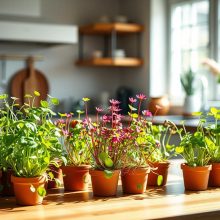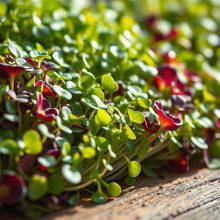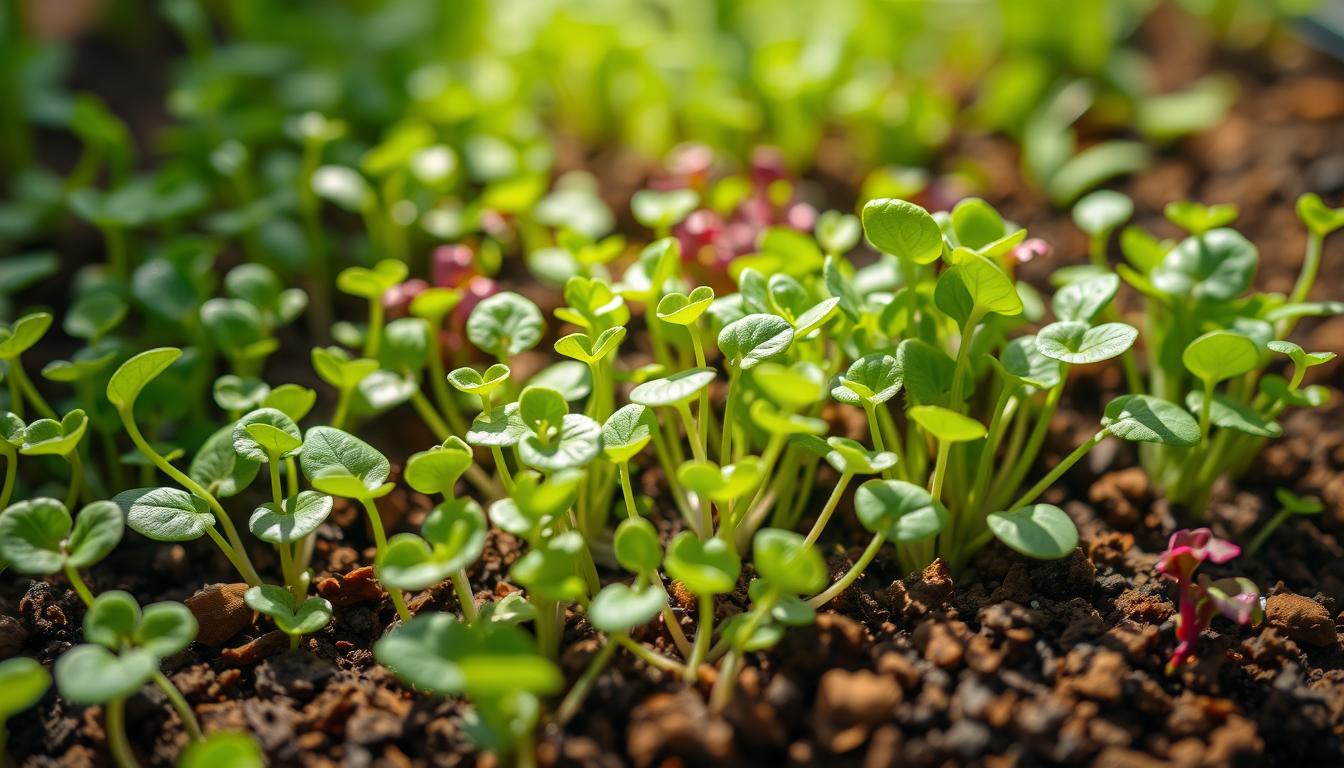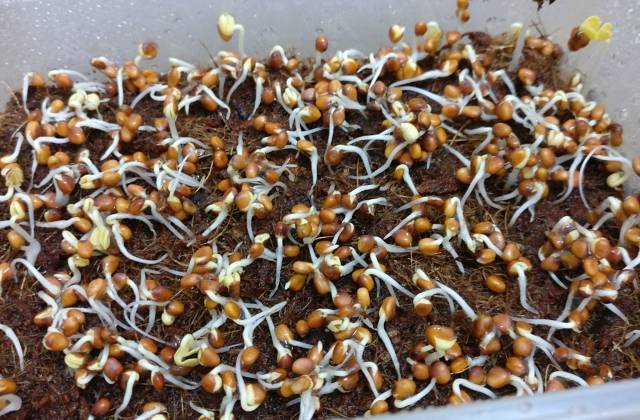Microgreens 101: Everything You Need to Know
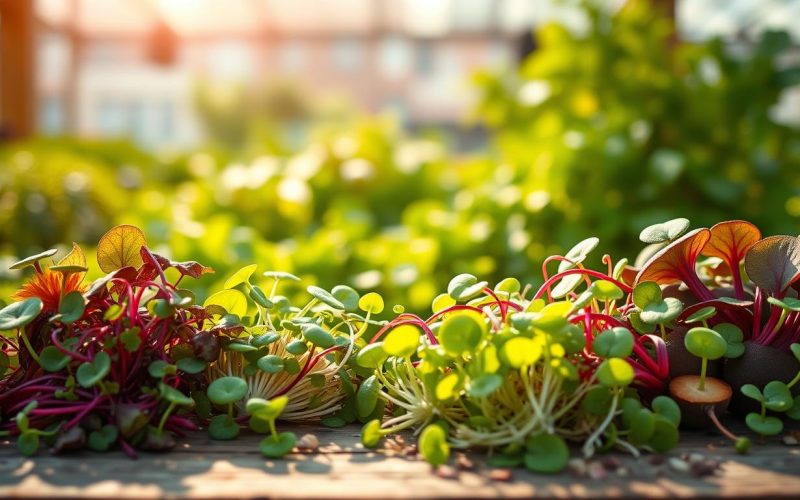
Microgreens have changed the way we eat and think about food. They started as a special ingredient but are now a favorite superfood. These small plants are full of nutrients and have strong flavors, even though they’re tiny.
In the 1980s, chefs in California restaurants first used microgreens. They quickly became popular with chefs and people who care about their health. Unlike regular veggies, microgreens are loaded with vitamins, minerals, and antioxidants. They’re a great way to boost your diet.
Microgreens are more than just a food trend. They’re a smart choice for growing food in cities or at home. You don’t need a lot of space or equipment to grow them. They’re perfect for adding nutrition and creativity to your meals.
Key Takeaways
- Microgreens are young vegetable and herb shoots harvested within 7-14 days of germination
- They contain up to 40 times more nutrients than mature plant versions
- Easy to grow at home with minimal equipment
- Versatile ingredient in salads, sandwiches, and garnishes
- Sustainable food option for urban environments
What Are Microgreens?
Microgreens are tiny vegetable greens picked just after the first true leaves grow. They are small but full of nutrients, often more than bigger vegetables.
These tiny greens are a new way to get plant-based nutrients. They grow from seeds of vegetables, herbs, and grains. They are picked when they are only 1-3 inches tall.
Characteristics of Microgreens
Microgreens stand out because of their:
- Vibrant colors from deep green to purple
- Strong flavors
- Delicate texture
- Harvested in 7-14 days after they start growing
Nutritional Powerhouse
Microgreens are packed with nutrients. Studies show they can have up to 40 times more nutrients than full-grown plants. They are full of:
- Vitamin C
- Vitamin K
- Vitamin E
- Important minerals like potassium and iron
- Strong antioxidants
Popular Microgreen Varieties
Some well-known microgreens include:
- Radish microgreens
- Broccoli microgreens
- Sunflower shoots
- Pea shoots
- Arugula microgreens
Each type has its own taste and health benefits. They add excitement to any diet that focuses on nutrition and wellness.
Benefits of Growing Microgreens
Microgreens are a great choice for those who care about their health and love urban farming. These small plants are full of nutrients and offer many benefits. They go beyond what traditional gardening can do.
They are perfect for home gardeners and health lovers looking for green food options.
Health Benefits
Microgreens are packed with nutrients, even more than full-grown veggies. Studies show they have:
- Up to 40 times more nutrients than mature plant varieties
- High levels of antioxidants supporting immune function
- Potential anti-inflammatory properties
- Rich source of essential vitamins and minerals
Culinary Uses
Microgreens make any meal special. They add color and flavor to dishes. Chefs and home cooks love them for:
- Salads and sandwiches
- Garnishes for main dishes
- Smoothies and fresh juices
- Decorative plate presentations
Environmental Advantages
Microgreens are good for the planet too. They need very little water and space. This makes them a great choice for sustainable farming.
- Reduced water consumption
- Minimal space requirements
- Year-round indoor growing potential
- Low carbon footprint
Microgreens are a new way to eat well, be creative in the kitchen, and help the environment in cities.
How to Grow Microgreens at Home
Indoor gardening has changed how we get fresh, healthy food. Microgreens let home gardeners grow their own greens easily. They need little space and resources. It’s a fun and simple way to grow your own food.
Choosing the Right Seeds
Choosing good seeds is key for a successful garden. Here are some great microgreen seeds:
- Radish: Fast-growing and full of flavor
- Sunflower: Mild, nutty taste and full of nutrients
- Broccoli: Rich in antioxidants and easy to grow
- Arugula: Peppery taste great in salads
Required Tools and Supplies
To start your microgreen garden, you’ll need these things:
- Shallow trays with holes for water
- Organic potting soil or growing mats
- A spray bottle for watering
- Seeds of your choice
- Grow lights or a sunny spot
Step-by-Step Growing Process
Starting a microgreen garden is easy. First, fill your tray with 1-2 inches of soil. Spread the seeds over the soil, then cover them lightly. Mist the top and place it in a warm spot. Keep it moist and lighted well. In 7-10 days, you can harvest your greens.
Microgreens are a quick, green way to grow food in your kitchen. With a little effort, you can have fresh, tasty greens at home.
Best Conditions for Growing Microgreens
Creating the perfect environment for indoor gardening is key when growing microgreens. These tiny greens need specific conditions to thrive. Knowing the best growing parameters will help you grow organic microgreens at home.
Lighting Essentials for Healthy Growth
Microgreens need consistent and enough light to grow well. They usually require:
- 6-8 hours of direct light daily
- Natural sunlight from a south-facing window
- Supplemental grow lights for indoor gardening spaces
Temperature and Humidity Management
Keeping the right temperature and humidity is vital for growing microgreens. Most varieties like:
- Temperatures between 60-75°F (15-24°C)
- Humidity levels around 50-60%
- Consistent environmental conditions
Effective Watering Techniques
Proper watering is crucial to prevent mold and ensure strong growth. Use these watering tips:
- Use bottom watering methods
- Keep soil consistently moist but not waterlogged
- Water gently to avoid disturbing delicate seedlings
By controlling these conditions, you can create a perfect indoor gardening space for your organic microgreens. This ensures healthy and nutritious harvests.
Popular Microgreens to Grow
Growing microgreens at home is a great way to add nutrition and flavor to your meals. These small plants are packed with nutrients. They can change how you enjoy food.
Arugula Microgreens
Arugula microgreens have a bold, peppery taste. They are full of vitamins A, C, and K. They grow fast and need little space, perfect for indoor gardens.
- Spicy, robust flavor profile
- Rapid growth cycle
- Rich in antioxidants
Basil Microgreens
Basil microgreens have a strong herb flavor. They are full of iron and calcium. Their intense taste is great for topping pizzas, salads, and pasta.
- Sweet and aromatic taste
- Excellent source of minerals
- Simple to grow indoors
Radish Microgreens
Radish microgreens add a spicy kick to your food. They are very nutritious, with lots of vitamin E and antioxidants. They grow fast and add crunch to sandwiches and salads.
- Fast-growing variety
- Zesty, sharp flavor
- High nutrient density
Creative Ways to Use Microgreens
Microgreens are not just a superfood packed with nutrients. They’re also incredibly versatile in recipes. These tiny greens can turn ordinary dishes into culinary masterpieces. They add vibrant colors, intense flavors, and impressive nutrition.
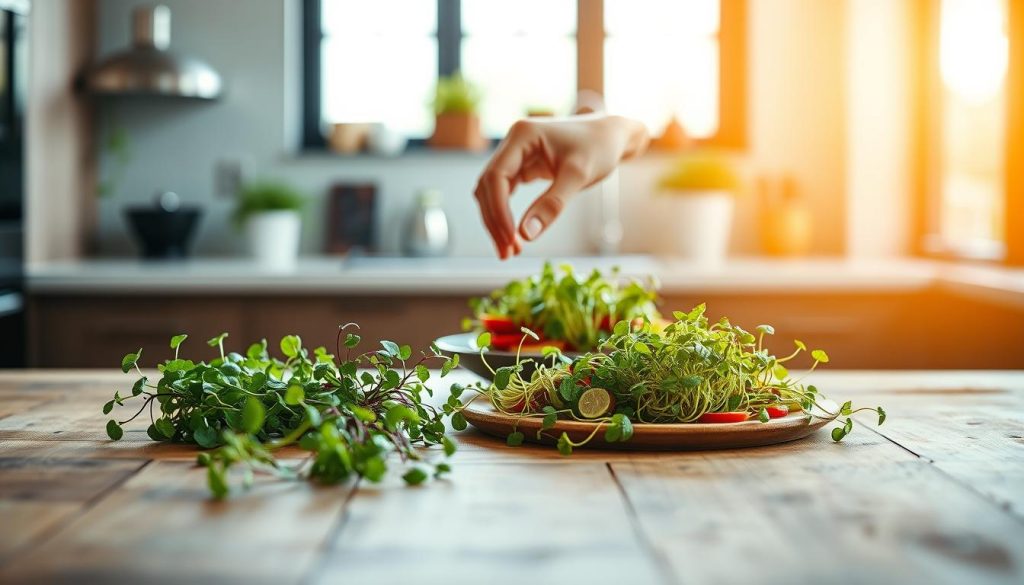
Discover exciting ways to incorporate these nutritional powerhouses into your daily meals:
Elevating Salads with Flavor
Microgreens add a punch of flavor and texture to salads. Sprinkle a mix of radish, arugula, and sunflower microgreens over your favorite greens. This instantly upgrades your salad to gourmet level.
Stunning Dish Garnishes
- Top soups with delicate microgreen sprouts
- Decorate pizzas with colorful microgreen varieties
- Enhance sandwiches and wraps with fresh microgreens
Nutrient-Packed Smoothies
Blend microgreens into your morning smoothie for an extra nutritional boost. Kale, broccoli, and spinach microgreens are great in green smoothies. They add depth and nutrients.
Experiment with these versatile greens. Discover new favorite recipes and unlock their full culinary potential!
Pests and Diseases
Growing microgreens can be tough when pests and diseases show up. Knowing about these issues helps gardeners keep their crops safe and healthy.
Common Pests Affecting Microgreens
Growers often face pests that harm their plants:
- Fungus gnats
- Aphids
- Whiteflies
- Spider mites
Preventive Measures for Healthy Growth
To grow microgreens well, it’s key to prevent problems. Clean spaces and the right methods help a lot:
- Use sterile potting soil
- Maintain proper air circulation
- Control humidity levels
- Practice regular crop rotation
Organic Solutions for Common Problems
Organic ways to fight pests are safe and effective. Options like neem oil, diatomaceous earth, and beneficial insects are great for keeping pests away.
By being careful and using these methods, microgreen fans can grow strong, healthy plants. This way, they avoid many pest problems.
Harvesting Microgreens
Growing microgreens is a fun journey that ends with a tasty harvest. These small greens are full of nutrients and taste great. Knowing when and how to harvest them brings out the best flavor and health benefits.
When to Harvest
Timing is key when growing microgreens. Most types are ready to harvest in 7-14 days. Look for these signs:
- First true leaves have developed
- Plants stand about 1-3 inches tall
- Leaves appear vibrant and full of color
- Stems look sturdy and healthy
How to Harvest
Harvesting microgreens needs care and precision. Use clean, sharp scissors to cut stems just above the soil. This keeps the nutrients in and prevents dirt from getting in. Cut in the morning when they’re most hydrated for the best taste.
Storing Fresh Microgreens
Storing your microgreens right keeps them fresh and nutritious. After cutting, gently rinse them and dry with paper towels. Store in a sealed container with a damp paper towel in the fridge. Most types stay fresh for 5-7 days when stored right.
- Use perforated containers for air circulation
- Keep refrigerated at 40°F
- Avoid washing until just before consumption
Urban Gardening and Microgreens
Urban farming has changed how city folks grow their own food. Microgreens are a great choice for those with little space. They turn small areas into lively green spots.
Microgreens in urban farming bring many benefits. They are full of nutrients and need very little room. This makes them ideal for tiny spaces like windowsills and balconies.
Benefits of Urban Farming
- Provides fresh, nutritious produce within city limits
- Reduces transportation costs and carbon footprint
- Promotes sustainable living practices
- Improves access to healthy food options
Space-Saving Techniques
Growing microgreens indoors is easy and doesn’t need much. You can use vertical shelves, small trays, and hydroponic systems. These tools help make the most of small spaces.
- Use stackable growing trays
- Install wall-mounted growing systems
- Utilize windowsills and small countertop areas
- Implement rotating growth schedules
Community Initiatives
Urban farming projects are bringing people together. They create community gardens and shared growing spaces. Workshops teach city folks how to grow their own food.
Sustainability and Microgreens
Microgreens are a key part of organic urban farming. They offer a green way to grow food that tackles many environmental issues. These small, nutrient-rich plants are changing how we view farming and food systems.
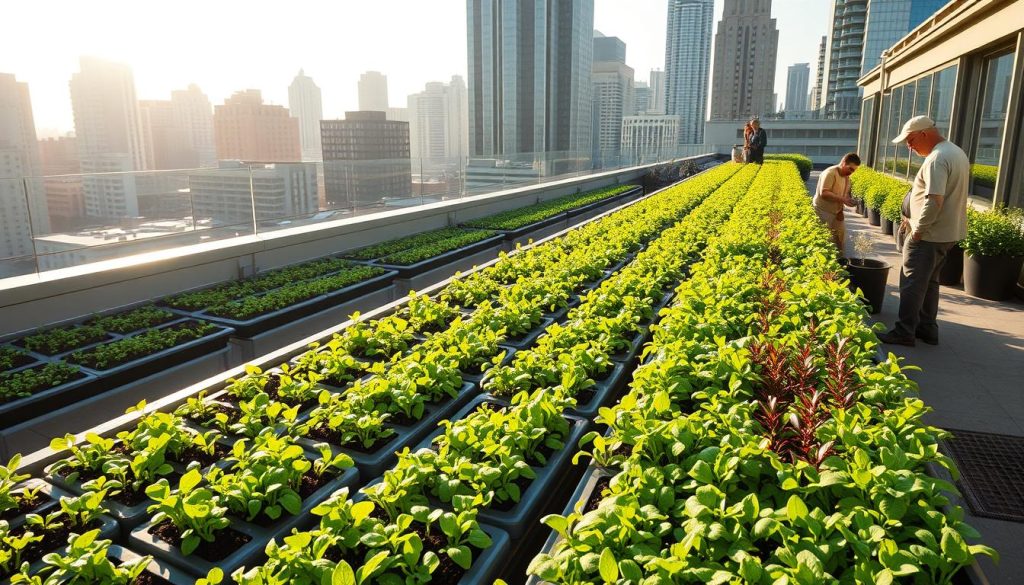
The good news is that microgreens have a low environmental impact. They need less water and space than regular crops. This makes them perfect for city farming fans.
Environmental Benefits
- Significantly reduced water consumption compared to traditional crops
- Minimal transportation needs due to local growing capabilities
- Minimal packaging requirements
- Lower carbon footprint per nutrient gram
Supporting Local Agriculture
Urban farming with microgreens lets local communities grow their own organic food. It’s done in homes or community areas. This approach helps cut down on big farms’ influence.
Reducing Food Waste
Microgreens are a smart way to fight food waste. Growers can pick only what they need. This avoids the waste seen in big farms.
By choosing microgreens, people help make our food system greener. They get to enjoy healthy, fresh food grown with little harm to the planet.
Exploring Microgreen Cuisine
Microgreens have become a big deal in the culinary world. Top chefs across the United States love them. Places like The French Laundry in California and Alinea in Chicago use them in their dishes. They add intense flavors and bright colors.
Celebrity chefs like David Chang and Thomas Keller have made microgreens popular. They show how these small greens can change the taste of food. They’re used as garnishes and even as main ingredients, changing how we eat.
The farm-to-table movement has made microgreens even more popular. Restaurants work with local farmers to get fresh, organic microgreens. This shows people want food that’s good for them and supports local farmers.
It seems microgreens are here to stay. More people are eating plant-based and health-conscious foods. Chefs are coming up with new ways to use microgreens, making food look and taste great. This could change how we think about green food for good.
